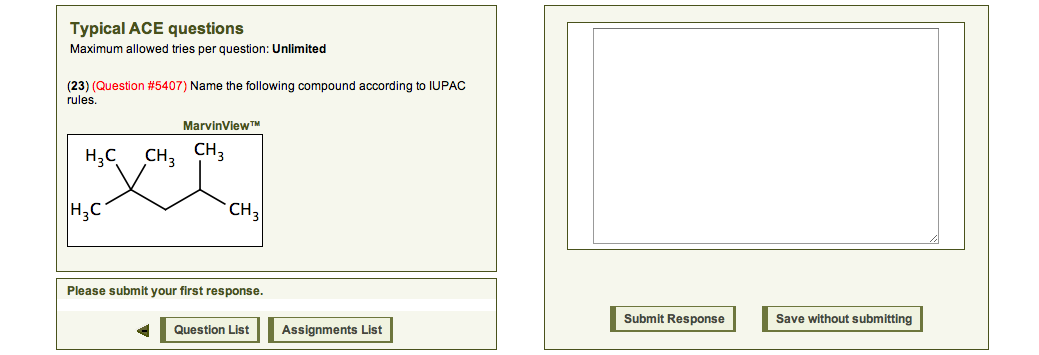

Over the years, we have added more and more capabilities to ACE, so ACE can now ask almost any type of question that an instructor of organic chemistry would like to ask. The list now includes:
Use the arrow buttons to scroll through typical responses and feedback for each question type.
ACE can ask students to draw the best Lewis structure of a compound. Students use a structure-drawing program called Lewis JS that we have devised for the purpose of drawing Lewis structures. Students need to include the correct number of unshared electrons on each atom and the correct formal charges for ACE to mark the structure as correct. Look through the responses that you can access through the pulldown menu to see the different kinds of mistakes that students may make and how ACE provides appropriate feedback that addresses those mistakes without giving away the answer.

|

|
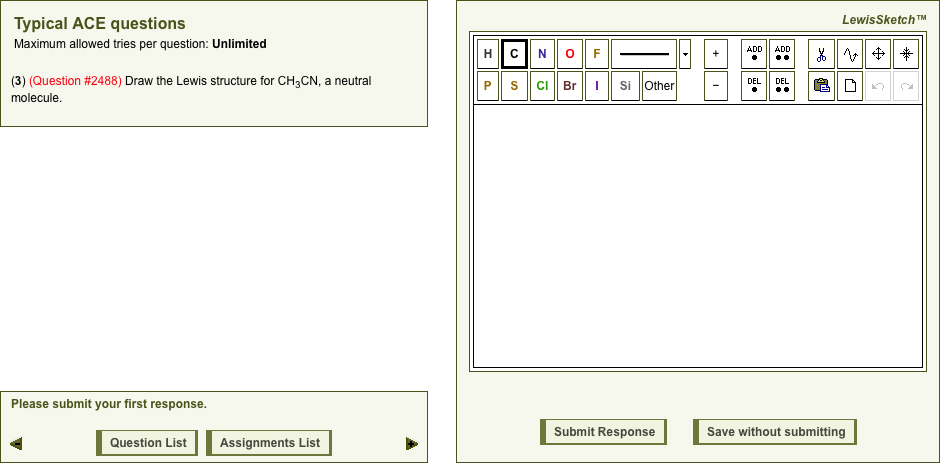
Draw-structure questions, the most common kind of question in ACE, ask students to draw a structure or a small group of structures. Students use the structure-drawing programs MarvinJS, which was developed by ChemAxon, a Hungarian cheminformatics company; you may be familiar with it from its incorporation into numerous other chemistry tools, such as Reaxys. Typical skeletal questions include, "Draw the product of the following reaction," or, "Draw the structure that gives rise to the following spectra," or, "Draw all stereoisomers of the given structure."

|

|
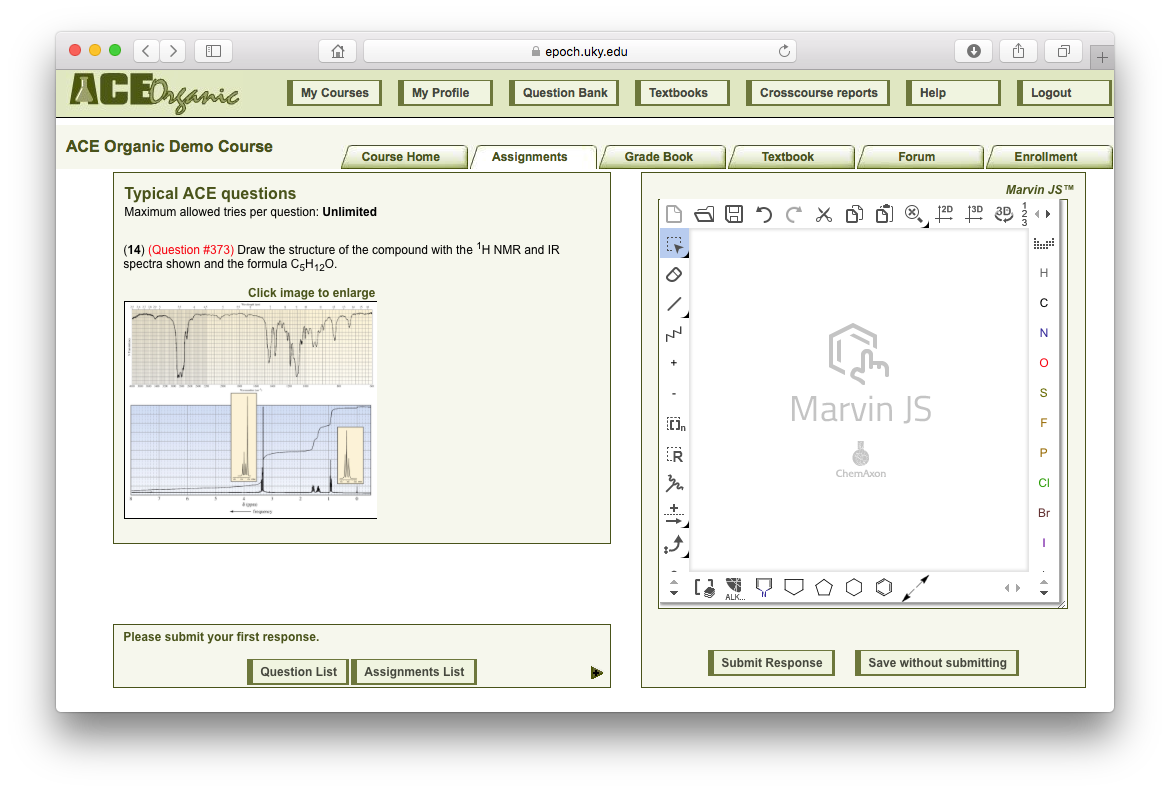

|

|
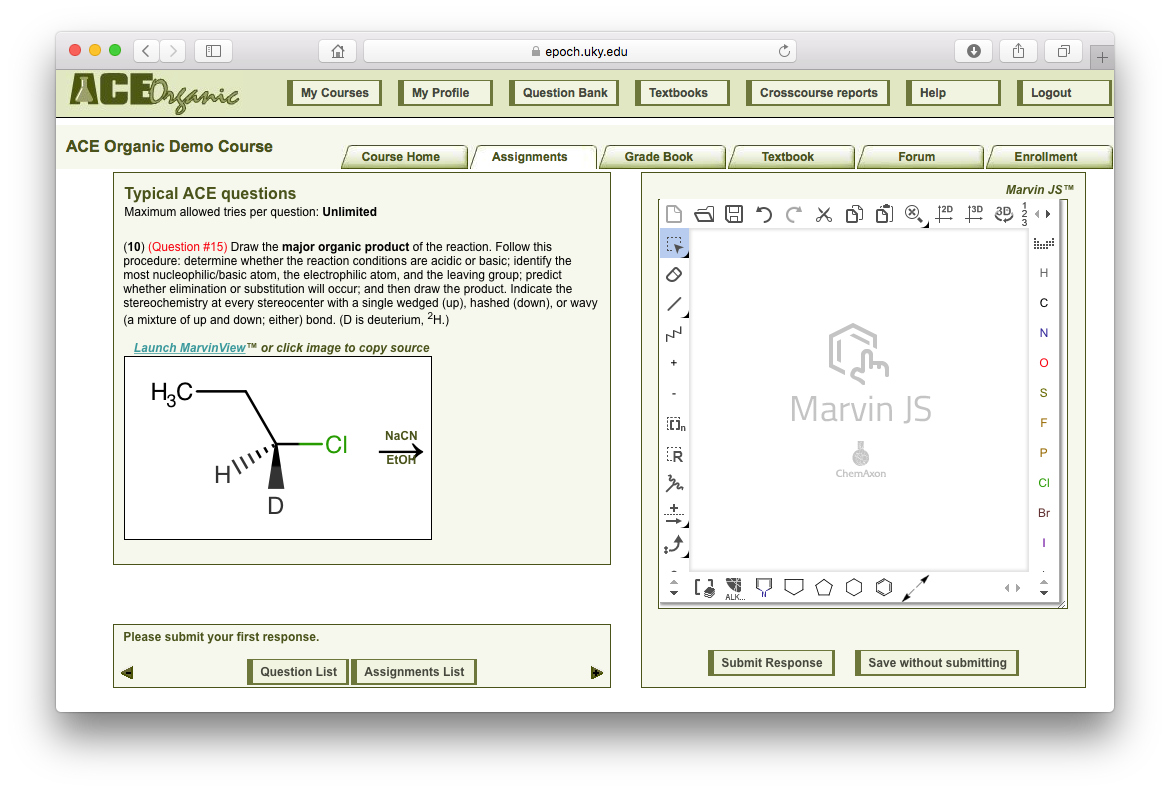
R-group questions are a special class of draw-structure questions. In an R-group question, the question author has drawn a figure that contains a generic R group. When ACE displays this figure to a student, it randomly chooses a specific R group to substitute for the author's generic R group. After the student answers the question correctly, the student can choose to practice a similar question, in which ACE substitutes yet another specific R group.

|

|

We are very proud of ACE's ability to ask students to draw multistep mechanisms. Again, the format of the response is just like what a student would draw on paper (with the exception of the boxes enclosing each step), and again, ACE is able to analyze the entire mechanism at once and provide appropriate feedback. Note especially how ACE understands that there are often many correct ways to draw a mechanism for a particular reaction: one, another, or several resonance structures of intermediates may be drawn, uninteresting coproducts may or may not be omitted, etc. (Compare the correct responses.) At the same time, ACE understands that some mechanisms that may superficially appear to be correct are in fact not reasonable. (See the last response.)

|

|
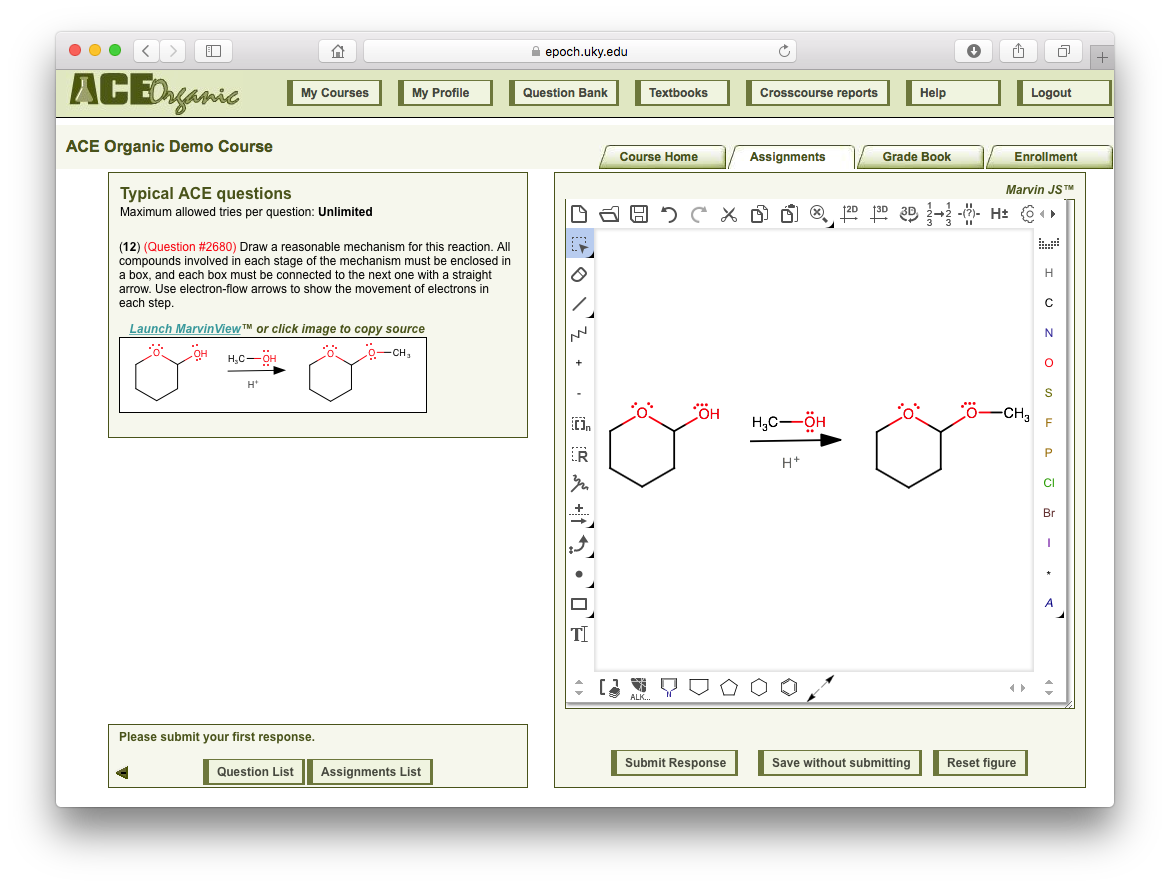
Resonance structure questions are a subset of mechanism questions. Again, ACE asks students to draw structures and electron-flow arrows, and it provides appropriate feedback for different kinds of mistakes.

|

|
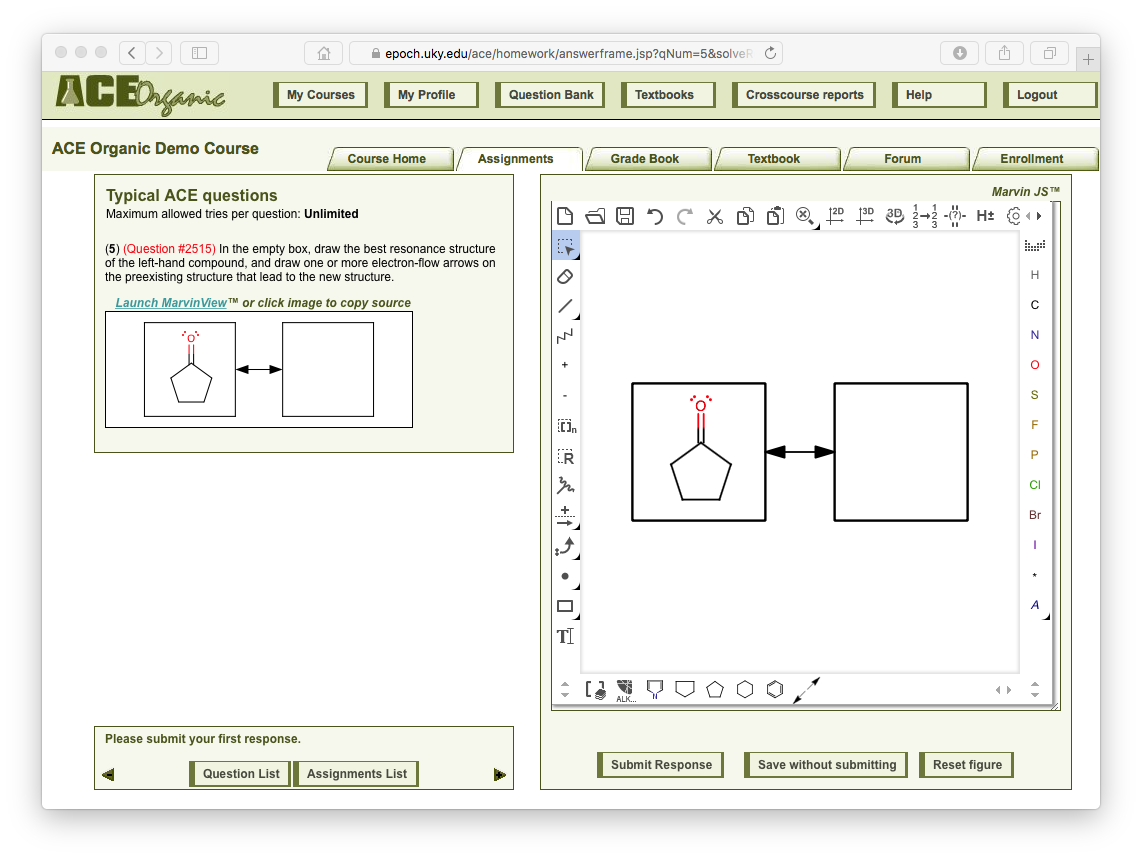
Multistep synthesis questions are similar to mechanism questions in that students need to connect a series of structures in a logical way. They are different in that the logic that connects the structures in multistep syntheses is synthetic transformations, not electron-flow arrows. For each synthetic step, ACE has students choose from a set of over 100 reaction conditions. A multistep synthesis is correct if the synthesis produces the requested target compound, if the starting materials all obey the rules established by the question author (number of C atoms, functional groups, formula, etc.), and if the reactions chosen by the student do indeed convert each compound in each step to at least one compound shown in the subsequent step. Note that ACE understands that a synthesis is incorrect if it gives the incorrect diastereomer. Note also that ACE understands that two completely different approaches to the same target can both be perfectly acceptable.

|

|

In a 3D conformation question, a student draws a chair cyclohexane or a sawhorse in a requested conformation. Students begin with a template that already contains 3D coordinate information and have to place substituents in their correct 3D positions. One very nice feature of MarvinJS is its ability to rotate these structures in three dimensions.

|

|
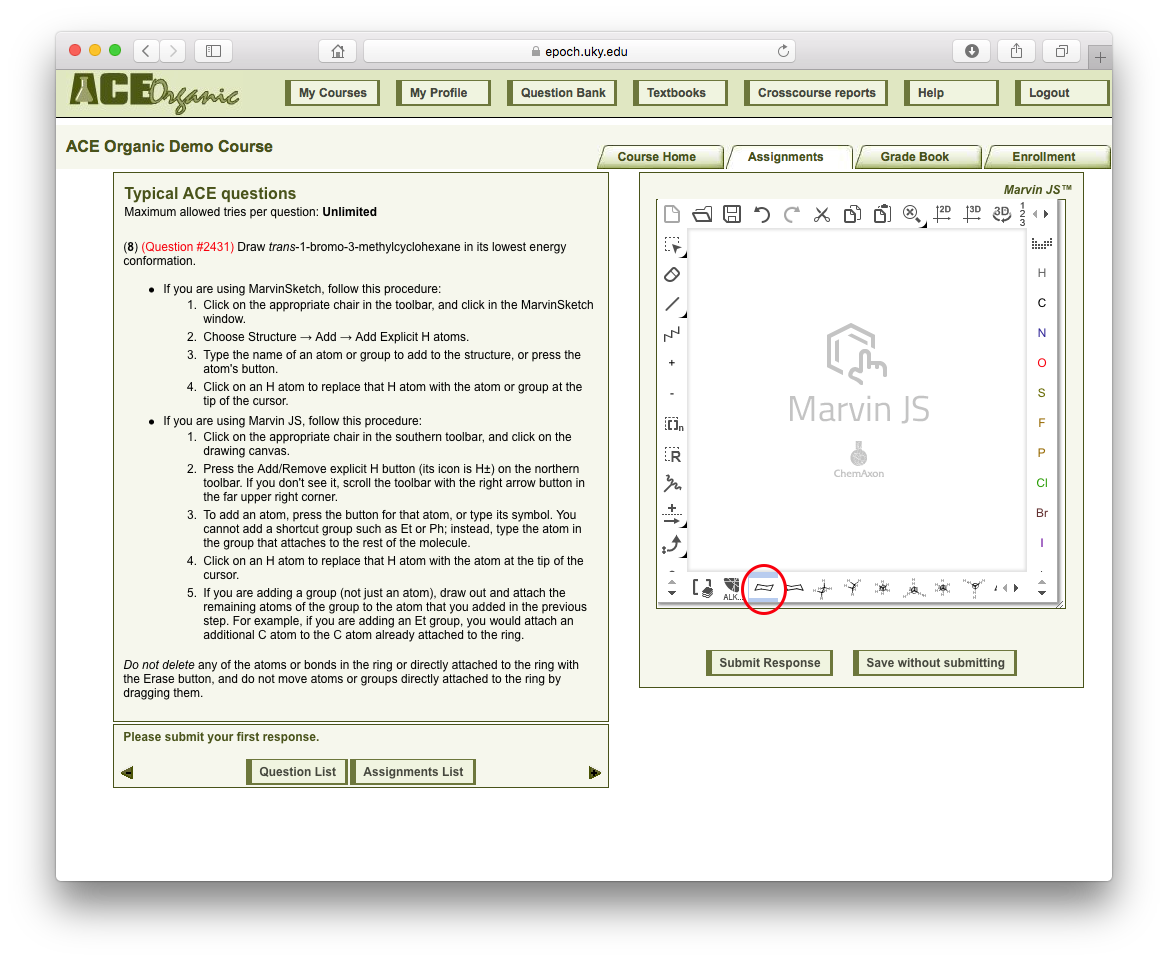
ACE also provides students the opportunity to practice drawing 2D chair projections. ACE analyzes 2D chairs by calculating the angles between certain lines in the drawing.

|

|
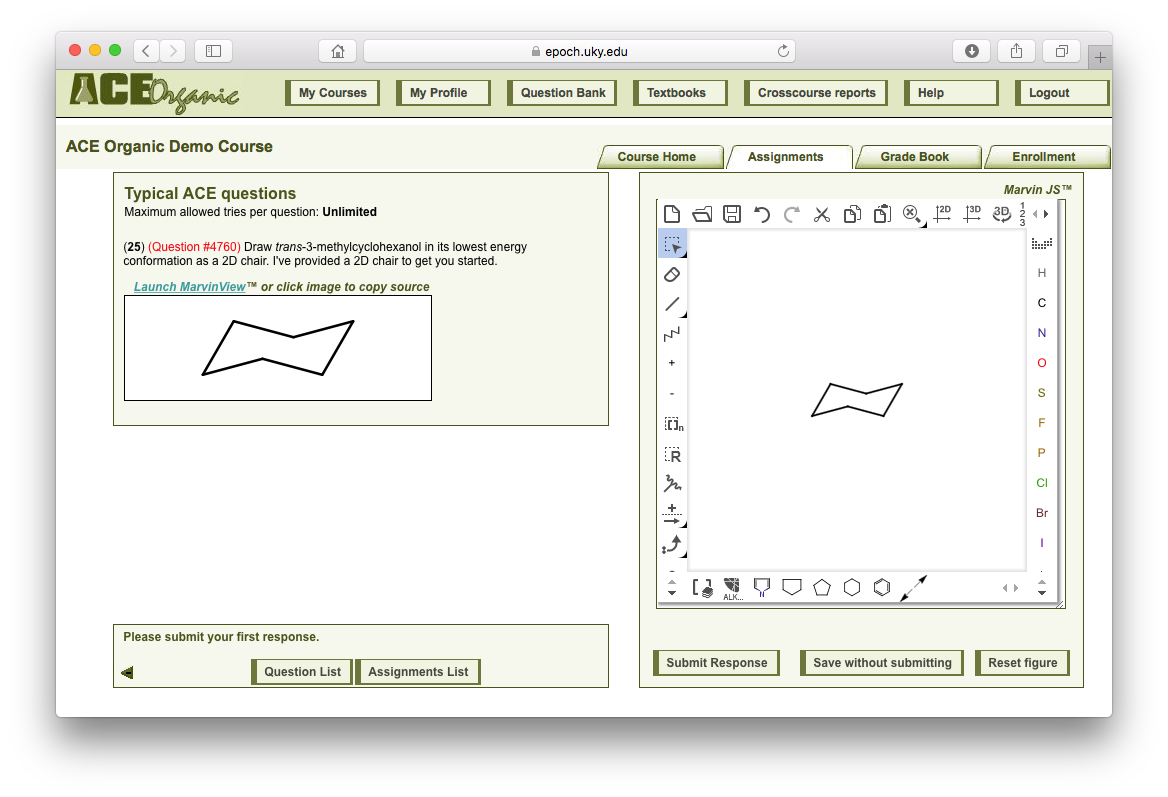
In an atom mapping question, ACE asks students to label one or more atoms according to a particular property (e.g., hybridization, NMR topicity or multiplicity, or acidity).

|

|
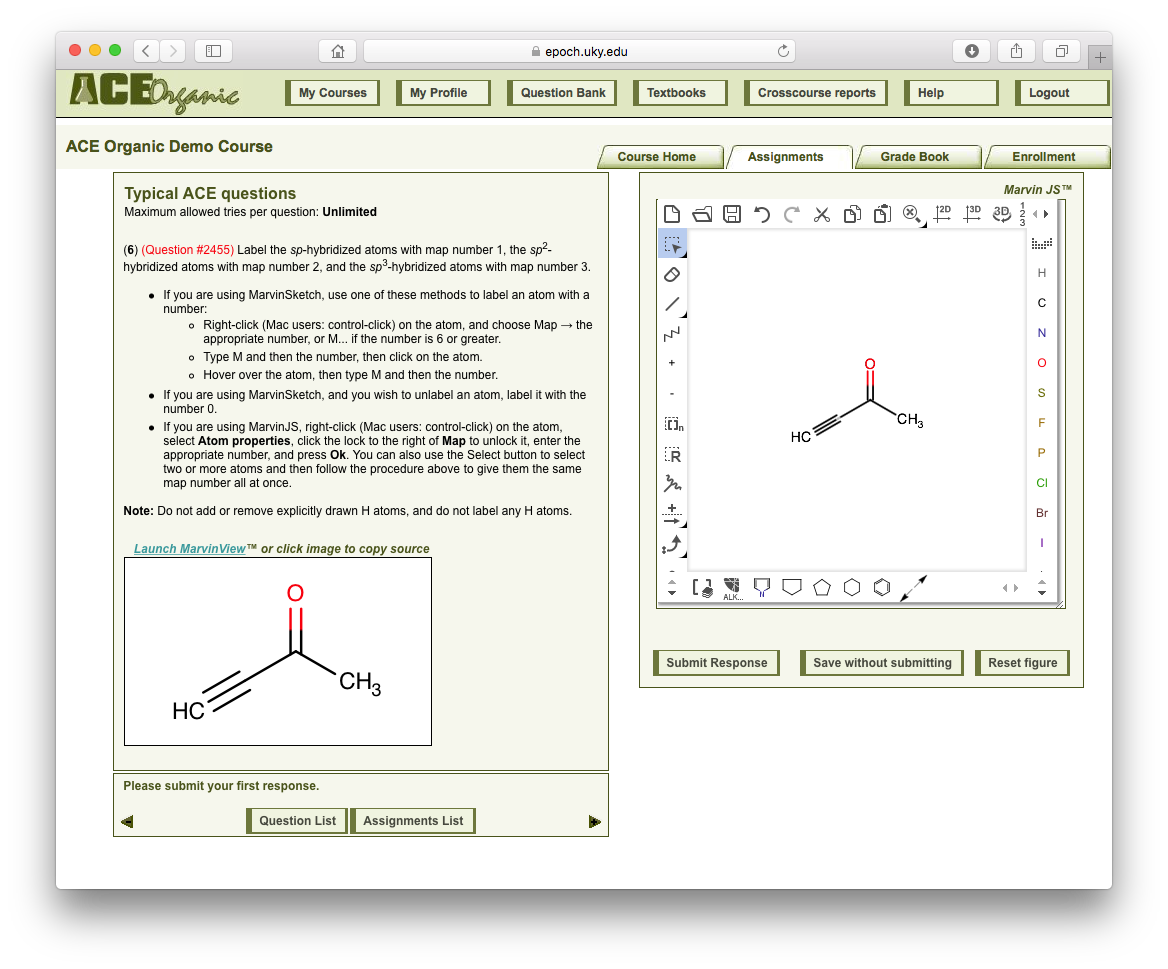
In orbital energy diagrams, students place orbitals in three columns. The students choose the number, type, relative energies, and occupancies of the orbitals, and they correlate atomic orbitals to molecular ones. The question author determines the size of the canvas.

|

|
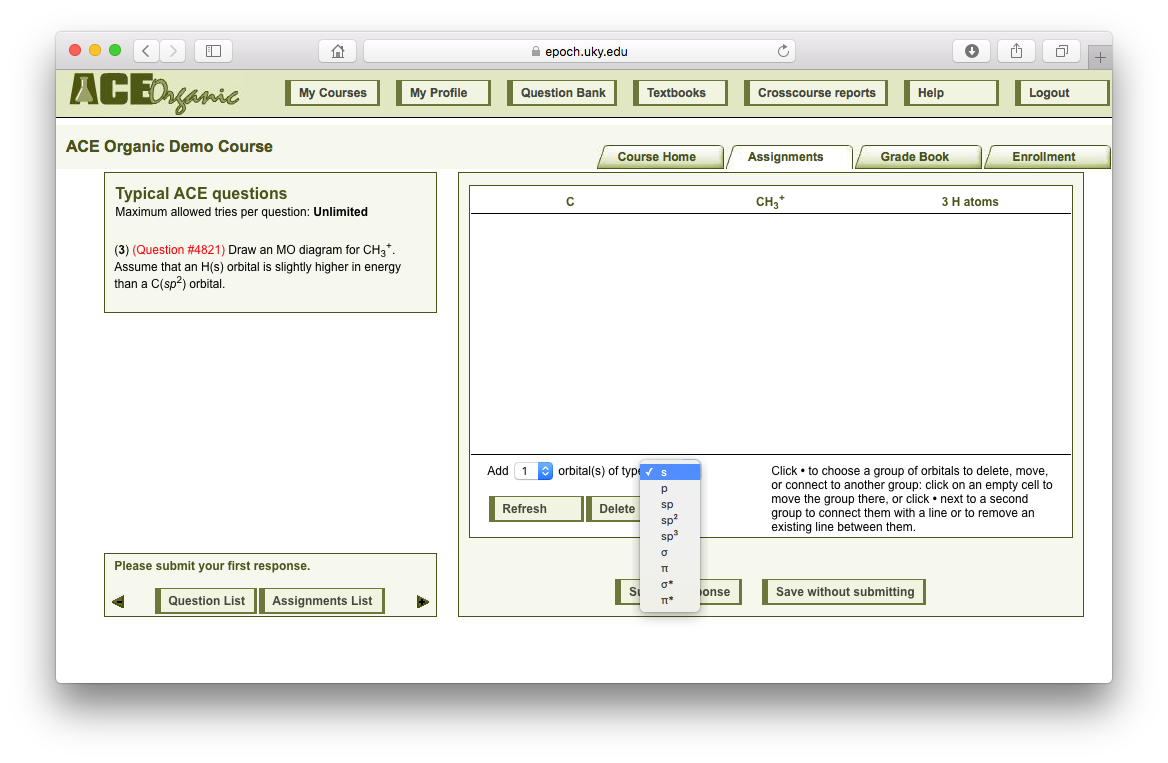
In reaction coordinate diagrams, students place maxima or minima (states) in columns. The students choose the number of states, their relative energies, and their labels, and they correlate each state to states in the adjacent columns. The question author determines the number of rows and columns in the canvas.

|

|
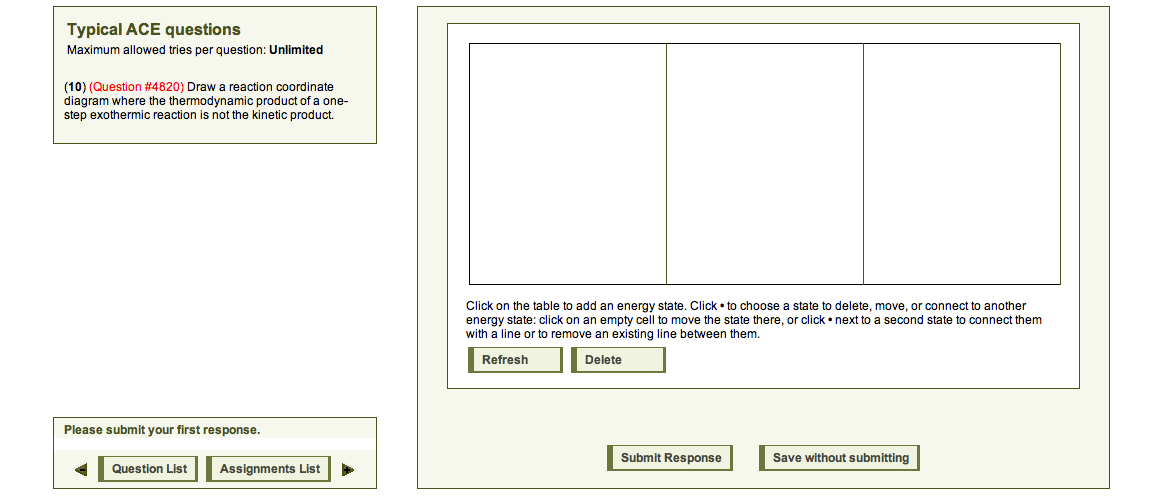
Ordering/ranking questions are useful for querying students about rates, energy, and acidity.

|

|
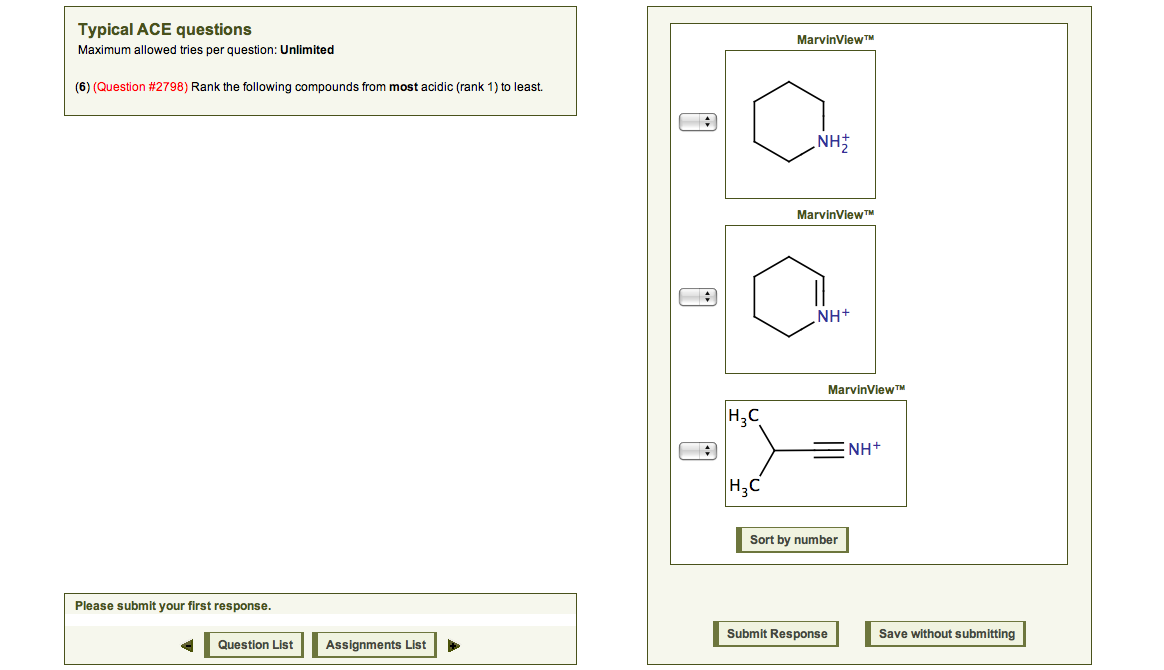
Multiple-choice questions can allow the student to select only a single option, or, more interestingly, can allow them to select any number of options.

|

|
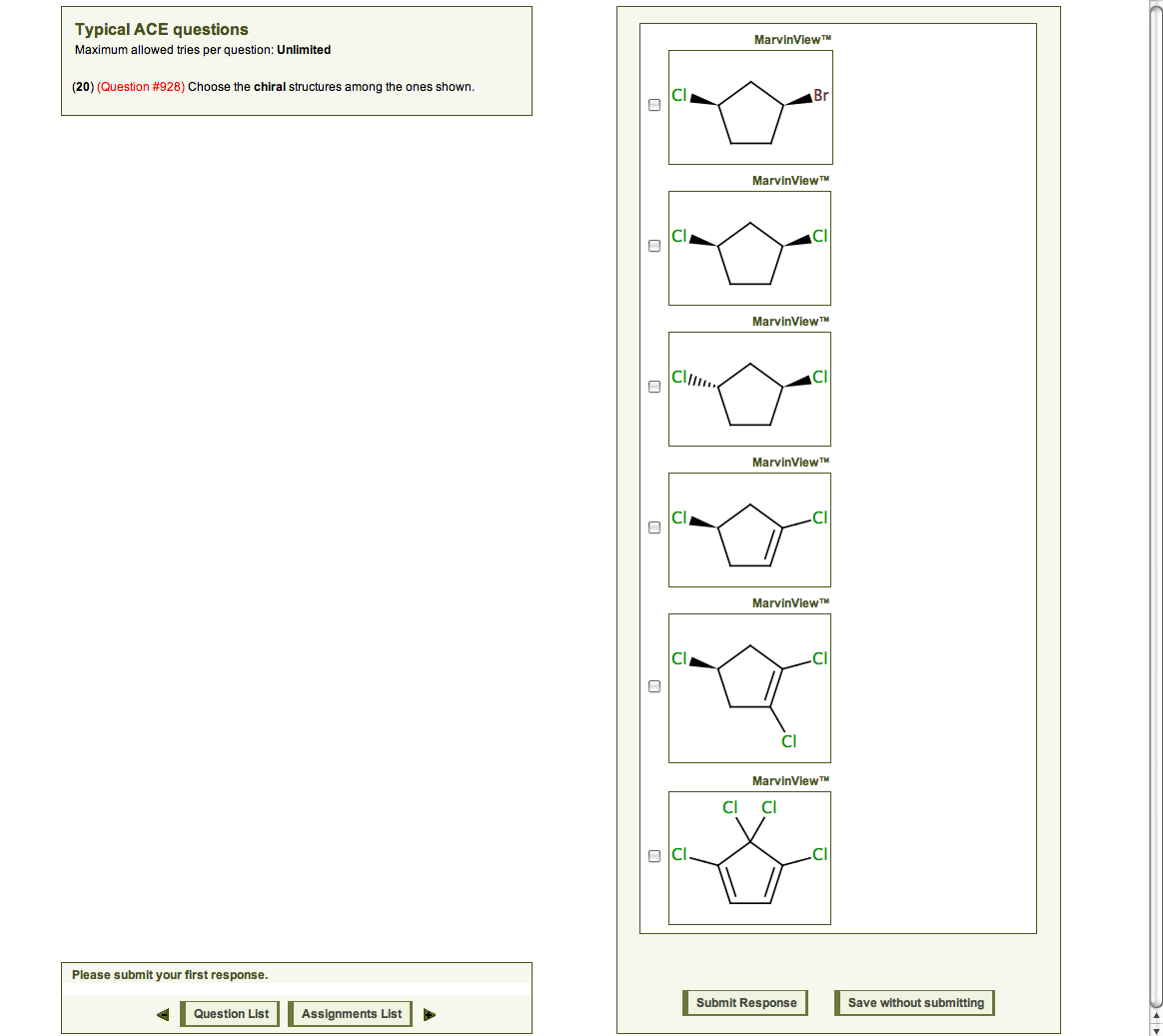
In a fill-in-the-blank question, students use pulldown menus to complete a sentence. It's essentially a multiple-choice question, but with n2 possible answers instead of n or n!.

|

|

A clickable image question asks the student to click somewhere on an image. ACE marks where the student clicks with a red X.

|

|
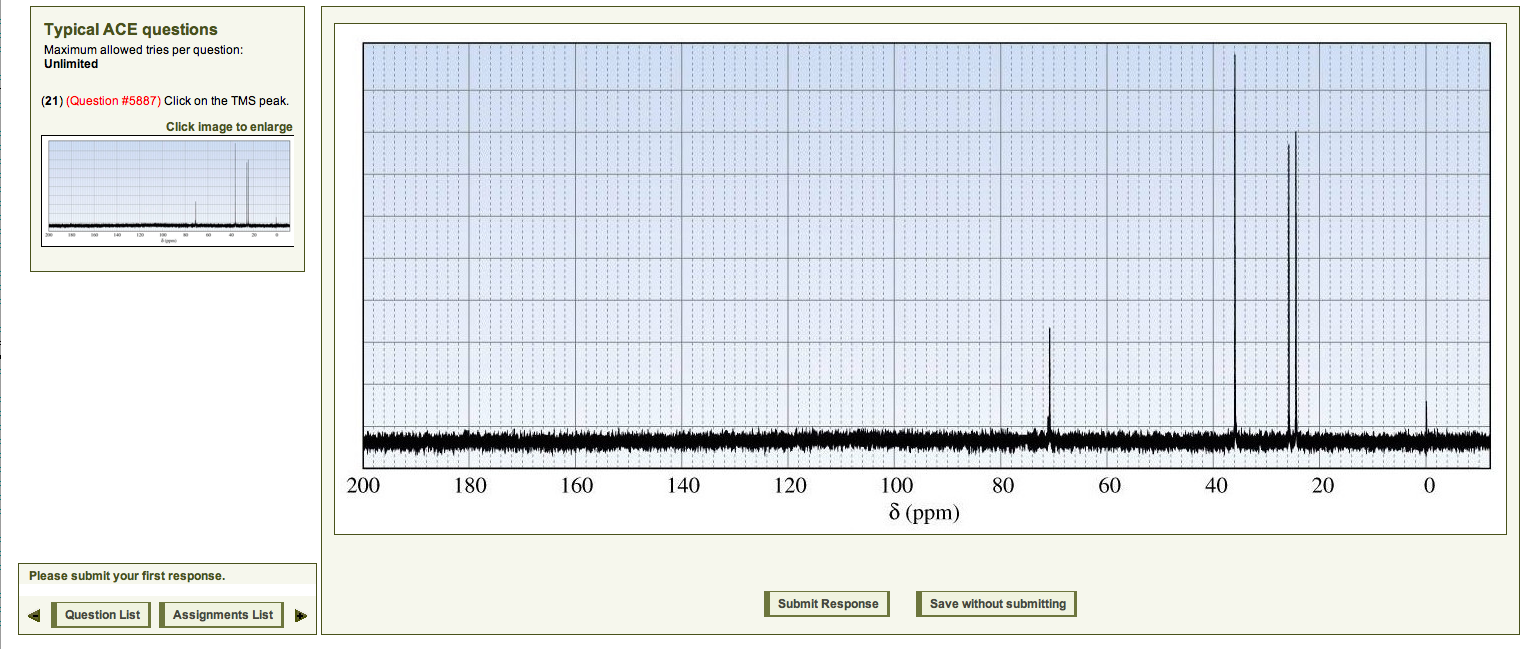
ACE can evaluate tables containing text and numerical values. The question author sets the tolerances within which ACE will accept numerical values. ACE can assign a grade based on the percentage of cells into which the student has entered an incorrect value.

|

|
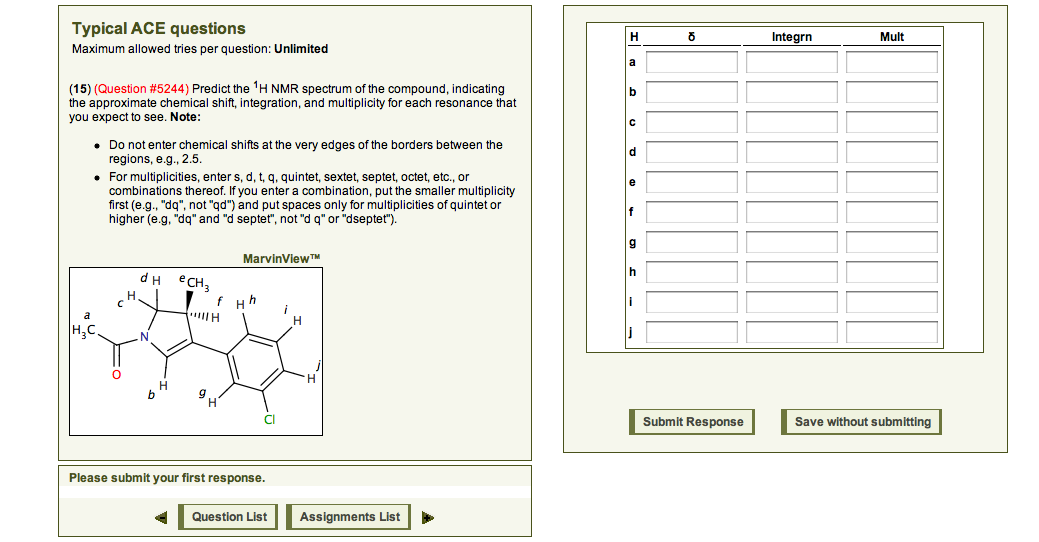
ACE understands the concept of significant figures. If the number that the student is calculating has dimensions, it is up to the question author to determine how many choices of dimension to offer the student.

|

|
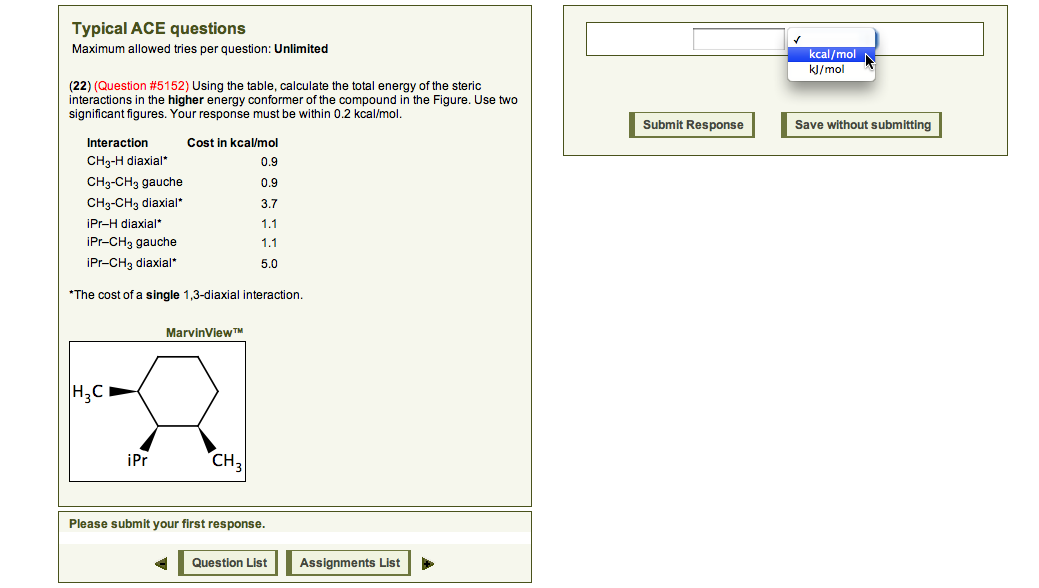
Not surprisingly, ACE can also collect text answers, which it can analyze by simple string searches.

|

|
